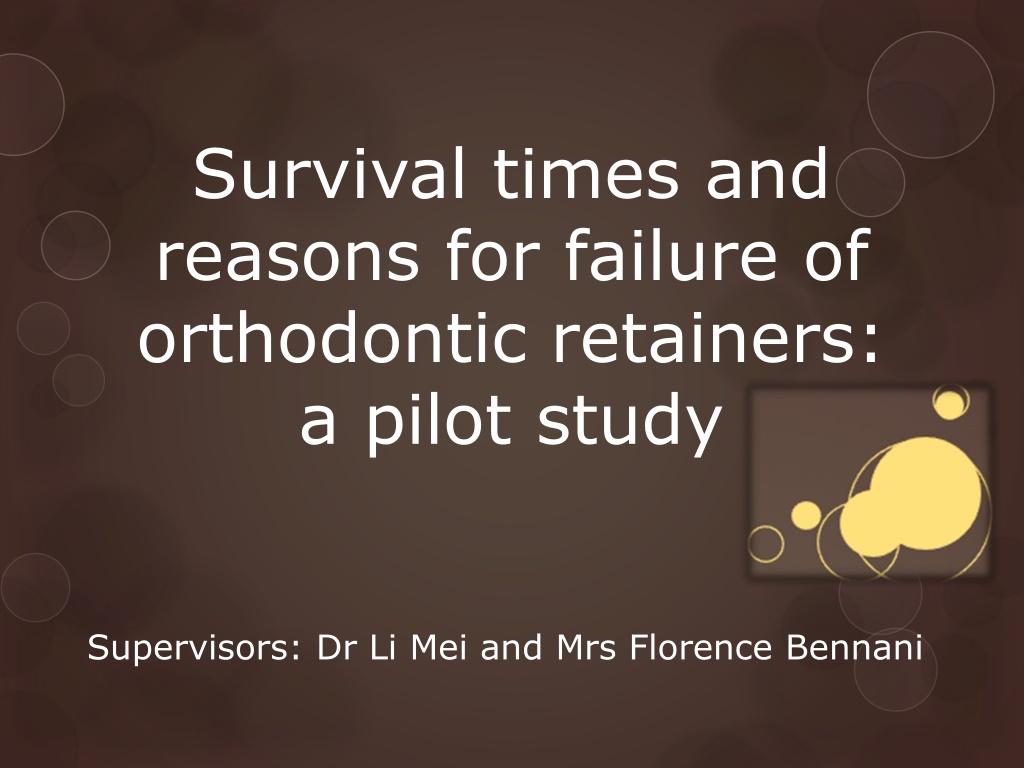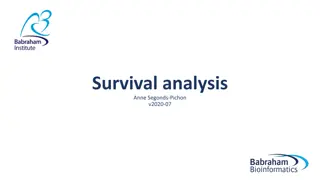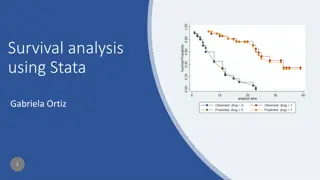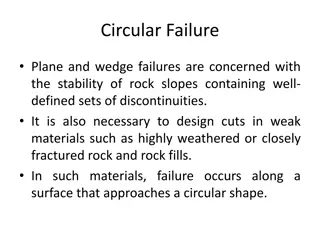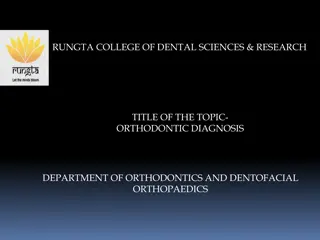Study on Survival Times and Failure Reasons of Orthodontic Retainers
This pilot study explores the survival times and reasons for failures of orthodontic retainers, crucial for maintaining post-treatment results. Factors contributing to relapse, retention periods in different countries, and the choice of retainer type are discussed. Objectives include assessing survival times and failure reasons to establish a baseline for retention protocols.
Uploaded on Oct 05, 2024 | 0 Views
Download Presentation

Please find below an Image/Link to download the presentation.
The content on the website is provided AS IS for your information and personal use only. It may not be sold, licensed, or shared on other websites without obtaining consent from the author. Download presentation by click this link. If you encounter any issues during the download, it is possible that the publisher has removed the file from their server.
E N D
Presentation Transcript
Survival times and reasons for failure of orthodontic retainers: a pilot study Supervisors: Dr Li Mei and Mrs Florence Bennani
Introduction Orthodontic retention = secondary orthodontic treatment McCoy, 1935
Definition Retention: the holding of teeth following orthodontic treatment in the treated position for the period of time necessary for maintenance of the result Moyers, 1973
Factors contributing to relapse Contraction of stretched & displaced gingival & periodontal fibres Imbalance in soft tissue pressures vs new positions of teeth Post-treatment occlusal stability & functionality Reitan, 1967, 1969; Blake and Bibby, 1998; Littlewood et al., 2009; Shawesh et al., 2010
Reitan, 1959 Animal study Teeth were rotated Following retention period of 232 days, supra-alveolar periodontal fibres continue to show displacement Fibrous tissue rearrangement even after several years!
Period of retention New Zealand & Australia: >2 years (nearly 1/3rd of orthodontists) Lifetime retention both removable & fixed (over 1/5th of orthodontists) Netherlands: >1 year - removable (80% of orthodontists) Permanent fixed (84% of orthodontists) Wong and Freer, 2004; Renkema et al., 2009
Choice of retainer type Pre-treatment occlusion Post-treatment occlusion Oral hygiene Patient compliance Aesthetics Comfort LONGEVITY Wong and Freer 2004; Littlewood et al., 2009; Renkema et al., 2009
Aims To assess: Survival times (range and rate) Reasons for failure of retainers used in the discipline of orthodontics To provide: Baseline for the choice of retention protocol
Eligibility criteria Upper and/or lower retainers Completed by August 2012 Minimum retention = 24 months Initiated in 2010-2011 Agreement to participate Fixed Postgraduate clinic Inclusion orthodontic appliances
Exclusion criteria Retainers worn <24 months Reasons for breakage irrelevant Incomplete / missing files Exclusion
Method 60 patients Telephone contact Standard questionnaire: Demographic data Retainer types received Problems Survival time Confirmed with patients files
Data analysis First retainers only Survival time in months From date patient received retainer failure date To end of August 2014
Results 117 retainers included 38 lower fixed 11 lower vacuum-formed 17 upper fixed 30 upper Hawley 21 upper vacuum-formed
Survival rate at 24 months 80 Overall: Maxillary retainers 58.8% Mandibular retainers 59.2% 40 70 Percentage 60 50 30 20 10 0 Upper Hawley Upper vacuum- formed Upper fixed Lower vacuum- formed Lower fixed
Survival rate for upper retainers 6 monthly intervals 100 95 90 85 Vacuum- formed Percentage 80 75 Fixed 70 Hawley 65 60 55 50 Start 6 12 18 24 Months
Survival rate for lower retainers 6 monthly intervals 100 95 90 85 Vacuum- formed Percentage 80 75 Fixed 70 65 60 55 50 Start 6 12 18 24 Months
Numbers and reasons for retainer failures Characteristics Broken Lost Poor Fit Debond (Total) Maxillary 7 3 1 0 (30) Hawley 6 2 1 0 (21) Vacuum-formed 4 0 0 4 (17) Fixed Mandibular 0 0 0 0 (0) Hawley 1 1 1 0 (11) Vacuum-formed 3 0 0 13 (38) Fixed
Discussion Interest of the study Retention time minimum 24 months Upper & lower retention regimen Findings Most failures in first 6 months except for lower vacuum-formed Early tendency for relapse? (Reitan 1967; 1979) Results in accordance with worldwide studies Limitation Retrospective data collection
Discussion: further observations Retainer combinations 18 patients: UF + UV and/or UH Impact on survival time? 10 patients: UH + UV part time retainer wear
Conclusion 24-month retainer survival rates: Lower vacuum-formed Upper Hawley (Breakage) Lower fixed (Debonding) Upper vacuum-formed (Breakage) Upper fixed
Clinical relevance Upper retainer of choice = Hawley Lower retainer of choice = Vacuum- formed Schedule more review appointments during first 6 months of retention
Thank you Questions?
